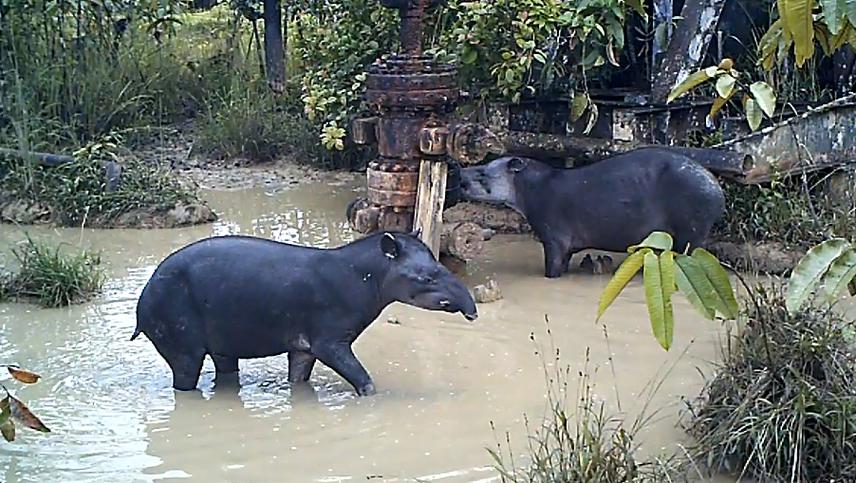Pedro Mayor
This project aims to assess the impact of oil pollution on the wildlife, due oil intake through confusion between oil spills and natural salt and mineral licks.

Two lowland tapirs ingesting water within an area affected by oil spills.
The oil industry in the Peruvian Amazon has inflicted severe damage to the ecosystems in which indigenous communities live, and there are indications that pollutants are present in concentrations hazardous to local human populations. This project is based on work done by various indigenous federations that monitor oil spills and previous work by our group. The indigenous population has consistently observed many species of wild mammals ingesting soil in places where oil spills have occurred. These discharges contain salt water, because the oil is extracted from deposits together with formation water. The need for minerals by wildlife is explained by the abundant precipitation in tropical forests causing leaching of soils, which causes them to be poor in nutrients and soluble salts.
This is reflected in significantly lower essential element concentrations in vegetation in the region.
The deliberate ingestion of soil by wildlife is well documented and their main source of certain minerals. However, the levels of some environmental contaminants in the soil may so high that they can become significantly detrimental to the animals health.
This project aims to assess the impact of oil pollution on the wildlife, due oil intake through confusion between oil spills and natural salt and mineral licks. We will determine:
1) the degree of threat to the health of wild animal populations,
2) whether pollutants enter the human food chain through subsistence hunting, the main activity for local communities.
The project aims to record wildlife consuming oil spills, using video camera traps, to confirm that the main species hunted by local communities are consuming crude oil spills, as reported by local people.
Previous work carried out by the research group allowed to locate the areas of greatest risk of crude spills. Infrared video cameras will be deployed in collaboration with various federations of indigenous people. Meanwhile, samples of body tissue and feces from wildlife hunted by communities will be collected and analyzed to determine the hydrocarbon content and bioaccumulation of heavy metals due to the intake of contaminated soil with oil spills. The collection of biological samples will be achieved through the normal hunting activities of local communities.